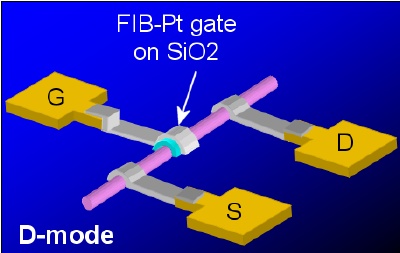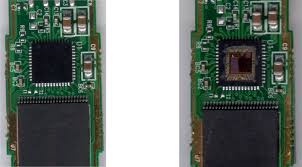Posts Tagged ‘break microcontroller embedded data’
 Break Microcontroller PIC18F8722 Flash
Break Microcontroller PIC18F8722 Flash

Break Microcontroller PIC18F8722 Flash memory tamper resistance system off, and then extract IC PIC18F8722 code from flash memory, the content can be reprogrammed to new unit for Microcontroller PIC18F8722 cloning
Break Microcontroller PIC18F8722 Flash memory tamper resistance system off, and then extract IC PIC18F8722 code from flash memory, the content can be reprogrammed to new unit for Microcontroller PIC18F8722 cloning;
Power-Managed Modes:
Peripheral Highlights (Continued):
Run: CPU on, peripherals on
Idle: CPU off, peripherals on
Sleep: CPU off, peripherals off
Idle mode currents down to 15 µA typical
Sleep current down to 0.2 µA typical
Timer1 Oscillator: 1.8 µA, 32 kHz, 2V
Watchdog Timer: 2.1 µA
Two-Speed Oscillator Start-up
· Three Enhanced Capture/Compare/PWM (ECCP) modules
– One, two or four PWM outputs
– Selectable polarity
– Programmable dead-time
– Auto-Shutdown and Auto-Restart
· Two Master Synchronous Serial Port (MSSP) modules supporting 2/3/4-wire SPI™ (all 4 modes) and I2C™ Master and Slave modes
Flexible Oscillator Structure:
· Four Crystal modes, up to 25 MHz
· 4X Phase Lock Loop (PLL) (available for crystal and internal oscillators)
· Two External RC modes, up to 4 MHz
· Two External Clock modes, up to 40 MHz
· Internal oscillator block:
– 8 user selectable frequencies, from 31 kHz to 8 MHz
– Provides a complete range of clock speeds from 31 kHz to 32 MHz when used with PLL
– User tunable to compensate for frequency drift
· Secondary oscillator using Timer1 @ 32 kHz
· Fail-Safe Clock Monitor:
– Allows for safe shutdown if peripheral clock stops External Memory Interface (PIC18F8627/8722 only):
· Address capability of up to 2 Mbytes
· 8-bit or 16-bit interface
Peripheral Highlights:
· Two Enhanced Addressable USART modules
– Supports RS-485, RS-232 and LIN 1.2
– RS-232 operation using internal oscillator block (no external crystal required)
– Auto-wake-up on Start bit
– Auto-baud detect
· 10-bit, up to 16-channel Analog-to-Digital Converter module (A/D)
– Auto-acquisition capability
– Conversion available during Sleep
· Dual analog comparators with input multiplexing
Special Microcontroller Features:
· C compiler optimized architecture:
– Optional extended instruction set designed to optimize re-entrant code
· 100,000 erase/write cycle Enhanced Flash program memory typical
· 1,000,000 erase/write cycle Data EEPROM memory typical
· Flash/Data EEPROM Retention: 100 years typical
· Self-programmable under software control
High current sink/source 25 mA/25 mA
Four programmable external interrupts
Four input change interrupts
Two Capture/Compare/PWM (CCP) modules
· Priority levels for interrupts
· 8 X 8 Single Cycle Hardware Multiplier
· Extended Watchdog Timer (WDT):
– Programmable period from 4 ms to 131s
· Single-supply In-Circuit Serial Programming™ (ICSP™) via two pins
· In-Circuit Debug (ICD) via two pins
· Wide operating voltage range: 2.0V to 5.5V
 Break Microcontroller ATmega164 Code
Break Microcontroller ATmega164 Code
Break Microcontroller ATmega164 flash memory and extract ATmega164 MCU code from its secured memory, make ATmega164 processor cloning;

With all the features the External Memory Interface provides, it is well suited to operate as an interface to memory devices such as External SRAM and Flash, and peripherals such as LCD-display, A/D, and D/A. The main features are:
Four different wait-state settings (including no wait-state).
Independent wait-state setting for different extErnal Memory sectors (configurable sector size).
The number of bits dedicated to address high byte is selectable.
Bus keepers on data lines to minimize current consumption (optional) if recover mcu atmega2560 flash.
When the eXternal MEMory (XMEM) is enabled, address space outside the internal SRAM becomes available using the dedicated External Memory pins (see Figure 2 on page 3, Table 36 on page 88, Table 42 on page 92, and Table 54 on page 102). The memory configuration is shown in Figure 14.
The interface consists of: AD7:0: Multiplexed low-order address bus and data bus.
A15:8: High-order address bus (configurable number of bits).
ALE: Address latch enable.
RD: Read strobe.
WR: Write strobe.
The control bits for the External Memory Interface are located in two registers, the External Memory Control Register A – XMCRA, and the External Memory Control Register B– XMCRB.
When the XMEM interface is enabled, the XMEM interface will override the setting in the data direction registers that corresponds to the ports dedicated to the XMEM interface.
For details about the port override, see the alternate functions in section “I/O-Ports” on page 81. The XMEM interface will auto-detect whether an access is internal or external if reverse engineering microcontroller atmega1281 program.
If the access is external, the XMEM interface will output address, data, and the control signals on the ports according to Figure 16 (this figure shows the wave forms without wait-states). When ALE goes from high-to-low, there is a valid address on AD7:0. ALE is low during a data transfer.
When the XMEM interface is enabled, also an internal access will cause activity on address, data and ALE ports, but the RD and WR strobes will not toggle during internal access. When the External Memory Interface is disabled, the normal pin and data direction settings are used.
Note that when the XMEM interface is disabled, the address space above the internal SRAM boundary is not mapped into the internal SRAM. Figure 15 illustrates how to connect an external SRAM to the AVR using an octal latch (typically “74 x 573” or equivalent) which is transparent when G is high.
Due to the high-speed operation of the XRAM interface, the address latch must be selected with care for system frequencies above 8 MHz @ 4V and 4 MHz @ 2.7V.
When operating at conditions above these frequencies, the typical old style 74HC series latch becomes inadequate. The External Memory Interface is designed in compliance to the 74AHC series latch. However, most latches can be used as long they comply with the main timing parameters. The main parameters for the address latch are:
D to Q propagation delay (tPD).
Data setup time before G low (tSU).
Data (address) hold time after G low (TH).
The External Memory Interface is designed to guaranty minimum address hold time after G is asserted low of th = 5 ns. Refer to tLAXX_LD/tLLAXX_ST in “External Data Memory Timing” Tables 169 through Tables 176 on pages 376 – 378.
The D-to-Q propagation delay (tPD) must be taken into consideration when calculating the access time requirement of the external component. The data setup time before G low (tSU) must not exceed address valid to ALE low (tAVLLC) minus PCB wiring delay (dependent on the capacitive load).
The pull-ups on the AD7:0 ports may be activated if the corresponding Port register is written to one. To reduce power consumption in sleep mode, it is recommended to disable the pull-ups by writing the Port register to zero before entering sleep.
The XMEM interface also provides a bus-keeper on the AD7:0 lines. The bus-keeper can be disabled and enabled in software as described in “External Memory Control Register B – XMCRB” on page 35. When enabled, the bus-keeper will keep the previous value on the AD7:0 bus while these lines are tri-stated by the XMEM interface.
 Break Microcontroller ATmega461A Firmware
Break Microcontroller ATmega461A Firmware
Break Microcontroller ATmega461A and readout Firmware from MCU ATmega461A flash memory, to make the MCU ATmega461A cloning;

The ATMEGA461A is a complex microcontroller with more peripheral units than can be supported within the 64 location reserved in the Opcode for the IN and OUT instructions.
For the Extended I/O space from $060 – $1FF in SRAM, only the ST/STS/STD and LD/LDS/LDD instructions can be used. The first 4,608/8,704 Data Memory locations address both the Register File, the I/O Memory, Extended I/O Memory, and the internal data SRAM if Break microcontroller attiny48v firmware.
The first 32 locations address the Register file, the next 64 location the standard I/O Memory, then 416 locations of Extended I/O memory and the next 8,192 locations address the internal data SRAM.
An optional external data SRAM can be used with the ATmega461. This SRAM will occupy an area in the remaining address locations in the 64K address space. This area starts at the address following the internal SRAM after Break IC ATtiny48A software.
The Register file, I/O, Extended I/O and Internal SRAM occupies the lowest 4,608/8,704 bytes, so when using 64KB (65,536 bytes) of External Memory, 60,478/56,832 Bytes of External Memory are available. See “External Memory Interface” on page 29 for details on how to take advantage of the external memory map.
When the addresses accessing the SRAM memory space exceeds the internal data memory locations, the external data SRAM is accessed using the same instructions as for the internal data memory access. When the internal data memories are accessed, the break and write strobe pins (PG0 and PG1) are inactive during the whole access cycle.
External SRAM operation is enabled by setting the SRE bit in the XMCRA Register. Accessing external SRAM takes one additional clock cycle per byte compared to access of the internal SRAM when recover chip atmega261a program.
This means that the commands LD, ST, LDS, STS, LDD, STD, PUSH, and POP take one additional clock cycle. If the Stack is placed in external SRAM, interrupts, subroutine calls and returns take three clock cycles extra because the three-byte program counter is pushed and popped, and external memory access does not take advantage of the internal pipe-line memory access.
When external SRAM interface is used with wait-state, one-byte external access takes two, three, or four additional clock cycles for one, two, and three wait-states respectively. Interrupts, subroutine calls and returns will need five, seven, or nine clock cycles more than specified in the instruction set manual for one, two, and three wait-states.
The five different addressing modes for the data memory cover: Direct, Indirect with Displacement, Indirect, Indirect with Pre-decrement, and Indirect with Post-increment. In the Register file, registers R26 to R31 feature the indirect addressing pointer registers.
The direct addressing reaches the entire data space. The Indirect with Displacement mode reaches 63 address locations from the base address given by the Y- or Z-register.
When using register indirect addressing modes with automatic pre-decrement and post increment, the address registers X, Y, and Z are decremented or incremented.
The 32 general purpose working registers, 64 I/O registers, and the 4,196/8,192 bytes of internal data SRAM in the ATmega640/1280/1281/2560/2561 are all accessible through all these addressing modes. The Register File is described in “General Purpose Register File” on page 12.